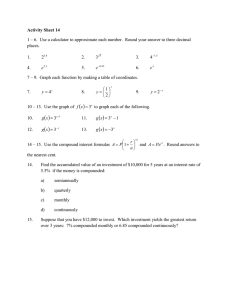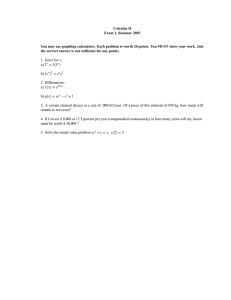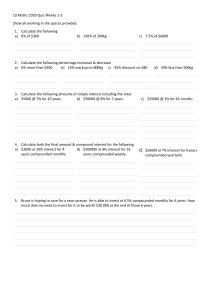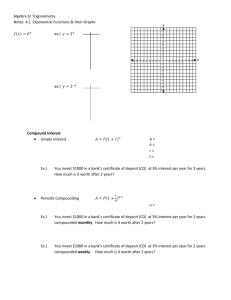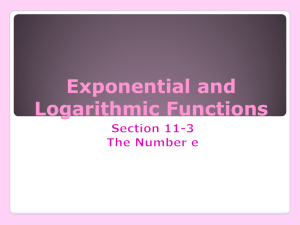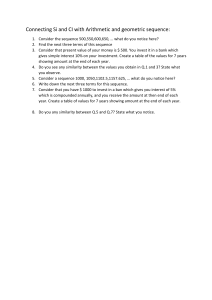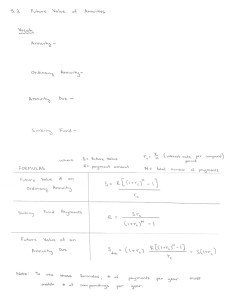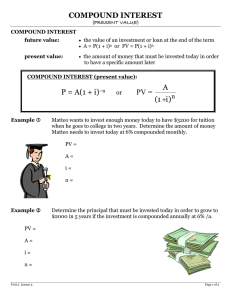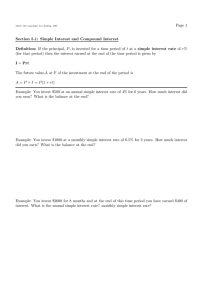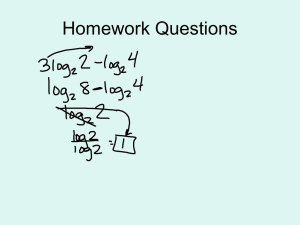Solutions for practice problems in 3.1 Exponential Functions 1. Sketch the graph: f
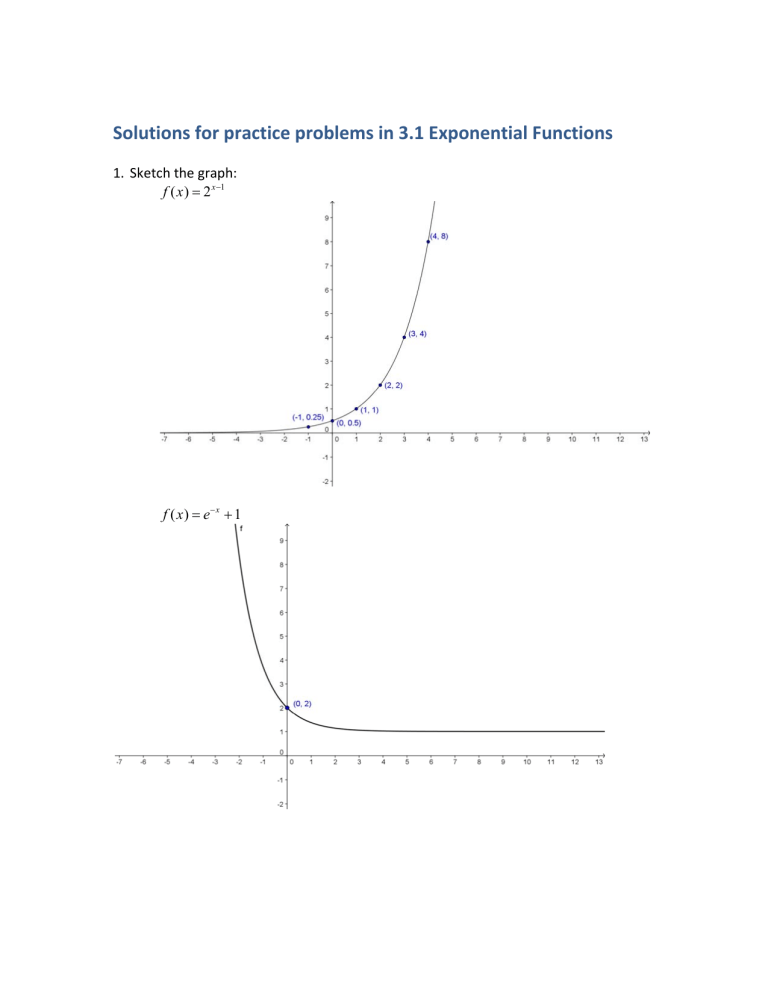
Solutions for practice problems in 3.1
Exponential Functions
1.
Sketch the graph: f ( x )
2 x
1
f ( x )
e
x
1
2.
If you invest $2000 at 3% compounded quarterly, how much will you have after ten years?
What if you invest it in a continuously compounded account at the same interest
rate?
Remember:
...where " A " is the ending amount, " P " is the beginning amount (or "principal"), " r " is the interest rate (expressed as a decimal), " n " is the number of compoundings a year, and " t " is the total number of years. In our case:
P =$2000 r =0.03 n =4 t =10
The continuous‐growth formula is first given in the above form " A = Pe rt ", using " r " for the growth rate b
3.
The population of a small town is 3,000.
If the annual growth rate is 2.3%, what will the population be in 15 years?

